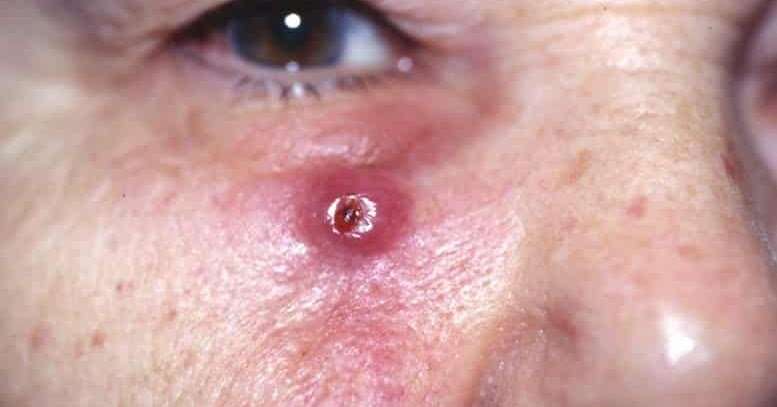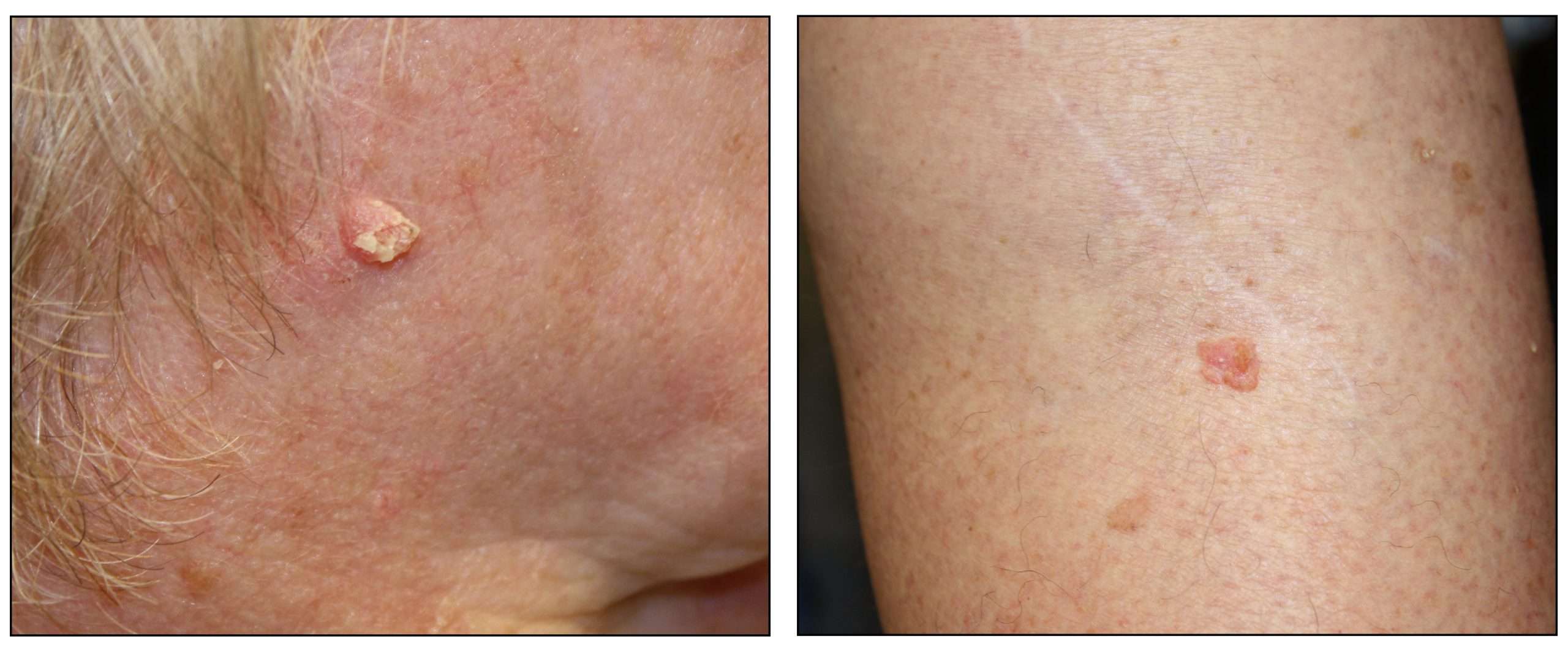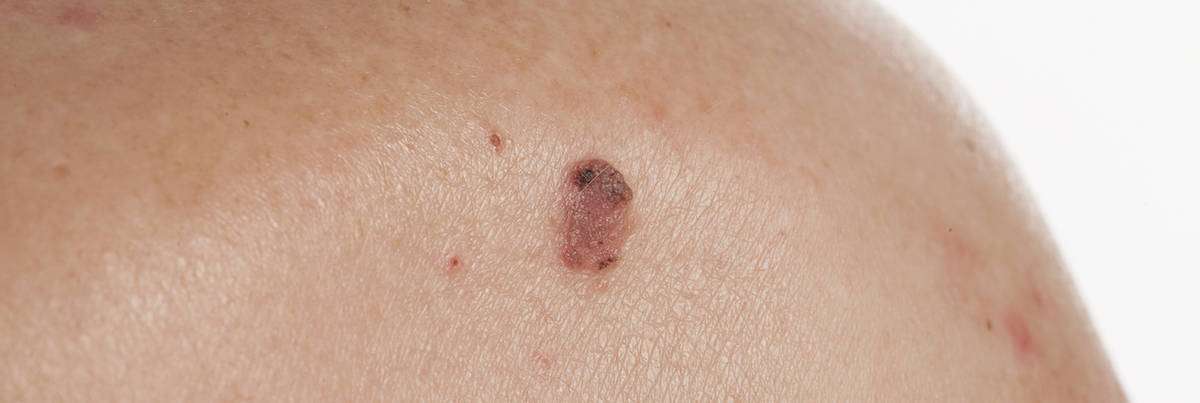Radiotherapy For Squamous Cell Carcinoma
Radiotherapy is generally used to treat Squamous Cell Carcinomas in areas near the eyes or on the nose or forehead, or other areas which are difficult to treat with surgery.
Radiotherapy Treatment Process – This treatment uses x-rays to target and kill cancer cells. X-ray beams are directed at the tumour, with no need for cutting or anesthesia.
Radiotherapy Treatment Recovery – Destruction of the tumour usually requires a series of treatments, administered several times a week for one to four weeks, or sometimes daily for one month.
Radiotherapy Treatment Prognosis – Cure rates range widely, from about 65 to 95 percent, since the technique does not provide precise control in identifying and removing residual cancer cells at the margins of the tumour.
The technique can involve long-term cosmetic problems and radiation risks, as well as multiple visits. For these reasons, though this therapy limits damage to adjacent tissue, it is mainly used for tumours that are hard to treat surgically, as well as patients for whom surgery is not advised, such as the elderly or those in poor health.
Are You At Risk
The skin is the largest organ of the body. It is also our bodys first line of defense. There are numerous factors which may increase your risk of skin cancer:
- Genetics: Individuals with fair complexions are at the greatest risk. Your risk is also increased if your parents, children, or siblings have had skin cancer.
- Sun Exposure: Over the course of a lifetime, exposure to the sun can lead to a higher risk of skin cancer. Tanning beds and other false sunlight are no exception.
- Immunosuppression: Immunosuppression therapy following organ transplants, chemotherapy, AIDS, and other treatments can put you at a significant risk for skin cancer.
- Lifespan: Human life expectancy has increased from forty-two years in 1904 to close to eighty years today. As a result, the number of skin cancers being seen around the world is increasing.
Read Also: Does Skin Cancer Itch And Burn
What Are The Different Types Of Squamous Cell Carcinoma
People assume there is just a single type of squamous cell carcinoma, but there are actually several different types. Some are more likely to spread than others, but in general, most types share similar characteristics. The primary difference between the following types is related to the unique characteristics of the cancerous cells.
The primary types of squamous cell carcinoma are:
- Adenoid/pseudoglandular squamous cell carcinoma
- Small cell keratinizing squamous cell carcinoma
- Spindle cell squamous cell carcinoma
- Verrucous squamous cell carcinoma
Read Also: What Does Stage 3b Melanoma Mean
When Skin Cancer Spreads
If squamous cell carcinoma spreads it first moves to nearby lymph nodes. From the lymph nodes it can metastasize to other organs. In most cases the cancer spreads to the lungs, although it can travel elsewhere.
The risk of metastasis is low. It is estimated that from two to six percent of cases metastasize. Generally, it is the high-risk cases of the disease that have this problem, when they are left untreated. Factors such as age, sun exposure, and fair skin increase risk. Once the cancer has reached the lymph nodes the morbidity rate is significant. If squamous cell carcinoma reaches the lungs it cannot be cured.
My Appointment With A Plastic Surgeon

Unfortunately, when they started showing up, I had a really terrible health insurance policy so I was unable to get them treated. Once I got better insurance and had built up some vacation time at work so I could be off for recovery, I made an appointment with my plastic surgeon.
As I was showing him the areas, he commented wryly that I must have been saving them up for him. In all, there were 22 areas he determined needed to be removed. He had a printout of a body map and marked each area for removal on the paper, which he would bring with him the day of surgery.
Also Check: Stage 2 Invasive Ductal Carcinoma Survival Rate
How Long Does It Take For A Squamous Cell Skin Cancer To Spread
Ask U.S. doctors your own question and get educational, text answers â it’s anonymous and free!
Ask U.S. doctors your own question and get educational, text answers â it’s anonymous and free!
HealthTap doctors are based in the U.S., board certified, and available by text or video.
How Do Dermatologists Treat Squamous Cell Carcinoma Of The Skin
Most patients are treated with a type of surgery called surgical removal. Your dermatologist or Mohs surgeon can often perform this type of treatment during an office visit.
The following describes what to expect from surgical removal and other treatments for this skin cancer:
Surgical removal: Three types of surgical removal are used to treat this type of skin cancer. All can be performed during an office visit while you remain awake.
Your dermatologist will choose the type of surgical removal you receive, based on where the skin cancer appears on your body, how deeply the cancer has grown, and other considerations.
During surgical removal, your dermatologist cuts out the tumor. When the cancer is caught early, this may be the only treatment you need.
Here’s what happens during each type of surgical removal used to treat this skin cancer:
Radiation therapy: If surgical removal alone cannot treat the cancer or you cannot have surgical removal, your treatment plan may include radiation treatments.
The different types of radiation therapy used to treat SCC are:
-
Superficial radiation therapy: Beams of radiation are directed just beneath the skin, which treats only the tumor.
-
External beam radiation therapy: High-energy beams of radiation are sent into the tumor in order to kill cancer cells.
-
Brachytherapy : Radioactive implants are placed inside the cancer. Also called internal radiation, this therapy is often used to treat prostate cancer.
Recommended Reading: Basal Cell Carcinoma Etiology
Different Kinds Of Skin Cancer
There are many types of skin cancer. Some are very rare. Your doctor can tell you more about the type you have.
The two most common kinds of skin cancers are:
- Basal cell cancer, which starts in the lowest layer of the skin
- Squamous cell cancer, which starts in the top layer of the skin
Another kind of skin cancer is called melanoma. These cancers start from the color-making cells of the skin . You can read about melanoma in If You Have Melanoma Skin Cancer.
What Are The Risk Factors For Squamous Cell Carcinoma Of Oral Cavity
The risk factors for Squamous Cell Carcinoma of Oral Cavity include:
- Smoking and chewing of tobacco are strong risk factors for this type of Oral Cavity Cancer
- Radiation therapy in the face or mouth region
- Arsenic exposure
- Coal tar exposure
- Individuals with weak immune system, which could be due to cancer treatment, AIDS, or those on immunosuppressant drugs after receiving an organ transplant
- Caucasians are more vulnerable compared to other dark-skinned individuals
It is important to note that having a risk factor does not mean that one will get the condition. A risk factor increases ones chances of getting a condition compared to an individual without the risk factors. Some risk factors are more important than others.
Also, not having a risk factor does not mean that an individual will not get the condition. It is always important to discuss the effect of risk factors with your healthcare provider.
Also Check: Does Skin Cancer Itch And Burn
Treatment Options: Mohs Surgery
Minor cases of skin cancer can often be treated with a simple excision, but in about half of all cases more significant intervention is needed. In these more significant cases, most dermatologic practices either offer Mohs surgery in-house or refer patients for Mohs surgery to a practice offering the procedure. While Mohs surgery effectively treats non-melanoma skin cancer 95 percent of the time or more, the side effects of Mohs surgery can be significant with bleeding, pain, and healing time being the most common. Theres also a need for reconstructive surgery in about 1 third of cases.
Understanding Your Stage Of Squamous Cell Skin Cancer
The stage is based on the size of the tumor, how deeply into the skin it has grown, and whether cancer has spread beyond the tumor to the lymph nodes. Your doctor will look at the results of the biopsy to determine the stage. If you have squamous cell skin cancer, your doctor may also recommend imaging such as CT or PET-CT scan, or testing lymph nodes near the tumor to see if the cancer has spread beyond the skin.
Most non-melanoma skin cancers are Stage 0 or Stage 1. Stage 3 and 4 are relatively rare. Based on the type of cancer, the stage of cancer, your overall health, and other factors, your doctor works with you to develop a treatment plan.
You May Like: Skin Cancer Metastasis To Lymph Nodes
Squamous Cell Carcinoma Prevention
Anyone who has had one Squamous Cell Carcinoma has an increased chance of developing another, especially in the same skin area or nearby. That is usually because the skin has already suffered irreversible sun damage.
Thus, it is crucial to pay particular attention to any previously treated site, and any changes noted should be shown immediately to your Doctor at the Bondi Junction Skin Cancer Clinic.
Squamous Cell Carcinomas on the nose, ears, and lips are especially prone to recurrence.
Even if no suspicious signs are noticed, regularly scheduled follow-up visits including total-body skin exams are an essential part of post-treatment care every 6 months.
To prevent Squamous Cell Carcinoma make sure you follow the recommendations below:
Symptoms Of Basal Cell Carcinoma

There are several types of basal cell carcinomas.
The nodular type of basal cell carcinoma usually begins as small, shiny, firm, almost clear to pink in color, raised growth. After a few months or years, visible dilated blood vessels may appear on the surface, and the center may break open and form a scab. The border of the cancer is sometimes thickened and pearly white. The cancer may alternately bleed and form a scab and heal, leading a person to falsely think that it is a sore rather than a cancer.
Other types of basal cell carcinomas vary greatly in appearance. For example, the superficial type appears as flat thin red or pink patches, and the morpheaform type appears as thicker flesh-colored or light red patches that look somewhat like scars.
You May Like: Invasive Ductal Carcinoma Survival
How Is Squamous Cell Carcinoma Of Oral Cavity Treated
Early diagnosis and treatment of Squamous Cell Carcinoma of Oral Cavity is important to avoid complications such as metastasis to other regions. The treatment measures may include:
- In most cases, a wide surgical excision and removal of the entire tumor is the preferred treatment option. This may be followed by radiation therapy and/or chemotherapy
- If the tumor has metastasized , then a combination of chemotherapy, radiation therapy, and invasive procedures may be used to treat the tumor
- Targeted therapy medications are generally used for locally infiltrated or metastatic SCCs. This therapy destroys the tumor cells by acting against the proteins that are responsible for tumor growth
- Reconstructive surgery may be necessary after cancer therapy
- Post-operative care is important: One must maintain minimum activity levels, until the surgical wound heals
- Follow-up care with regular screening and check-ups are important and encouraged
Squamous Cell Carcinoma Diagnosis
Occasionally a punch or shave biopsy may be required to confirm the diagnosis and to guide effective treatment.
This diagnostic process involves a Doctor taking a tissue sample for biopsy by removing a portion of the lesion with a biopsy punch or by scraping the lesion with a curette .Usually a biopsy is sufficient to establish the diagnosis of a Squamous Cell Carcinoma. In the rare case of suspected metastatic Squamous Cell Carcinoma, lymph nodes may be examined by the Doctor to see if the cancer has spread or by the use of imaging technologies like ultrasound, CT, or PET scanning.
You May Like: Osteomyoma
More Information About Basal Cell Carcinoma
The following are some English-language resources that may be useful. Please note that THE MANUAL is not responsible for the content of these resources.
See the following sites for comprehensive information about basal cell carcinoma, including detection, prevention, treatment options, and other resources:
What Are The Signs And Symptoms Of Squamous Cell Carcinoma Of Oral Cavity
The signs and symptoms of Squamous Cell Carcinoma of Oral Cavity include:
- In majority of the cases, the condition is asymptomatic and does not present any signs or symptoms
- Generally, squamous cell carcinomas are slow-growing tumors though SCC of Oral Cavity is an aggressive form of cancer
- The mouth parts affected may include the cheek, hard and soft palate, gums, etc.
- The skin lesions may appear as crusted ulcer, plaques, and nodules
- It may ulcerate and bleed. Occasionally, after the ulcer heals, it may become ulcerated again
- The size of the lesions range from 1-10 cm average size is usually less than 3 cm
- Individuals with immunocompromised states have more aggressive tumors
- Due to the presence of the lesion on the oral mucosa, it may be difficult for the individual to consume food and drink. Also, speaking may be difficult and painful
Read Also: Carcinoma Cancer Symptoms
How Is Squamous Cell Skin Cancer Of The Head And Neck Diagnosed
Diagnosis is made by clinical exam and a biopsy. Squamous cell cancers are staged by size and extent of growth. Squamous cell cancers can metastasize to nearby lymph nodes or other organs, and can invade both small and large nerves and local structures.
Biopsy can help determine if the squamous cell cancer is a low-risk tumor or a high-risk tumor that requires more aggressive treatment. Low-risk tumors are less than 10 millimeters in size, less than or equal to 5 millimeters deep and do not involve structures beyond the surrounding fat. High-risk tumors in the head and neck are those that involve the central face, nose and eye area, as well as those tumors that are greater than or equal to 10 millimeters on the cheeks, scalp and neck, tumors that are more than 5 millimeters thick or involve adjacent structures, tumors that invade nerves, tumors that are recurrent or arising from previously radiated tissue, and tumors arising in patients who are immunosuppressed.
Surgical Procedures For Basal & Squamous Cell Skin Cancers
Basal or squamous cell skin cancers may need to be removed with procedures such as electrodessication and curettage, surgical excision, or Mohs surgery, with possible reconstruction of the skin and surrounding tissue.
Squamous cell cancer can be aggressive, and our surgeons may need to remove more tissue. They may also recommend additional treatments for advanced squamous cell cancer, such as medications or radiation therapyenergy beams that penetrate the skin, killing cancer cells in the body.
Basal cell cancer is less likely to become aggressive, but if it does, our doctors may use surgery and other therapies to treat it.
Recommended Reading: How Long Does It Take Melanoma To Metastasize
When Your Cancer Comes Back
Finishing your treatment can come as a huge relief, especially if your doctor tells you youre in remission. Yet your cancer can come back. This is called a recurrence.
See your doctor for regular follow-up visits to catch any recurrence early, when its most treatable. The doctor who treated your cancer will let you know how often to get check-ups. You may see your doctor every 3 months for the first year, and then less often.
Recommended Reading: Can Squamous Cell Carcinoma Metastasis
Diagnosis And Treatment Of Basal Cell And Squamous Cell Carcinoma

JONATHON M. FIRNHABER, MD, East Carolina University, Brody School of Medicine, Greenville, North Carolina
Am Fam Physician. 2012 Jul 15 86:161-168.
Nonmelanoma skin cancer, which includes basal cell carcinoma and squamous cell carcinoma, is the most common cancer in the United States. Approximately 80 percent of nonmelanoma skin cancers are basal cell carcinoma and 20 percent are squamous cell carcinoma. Although the National Cancer Institute does not formally track the incidence and prevalence of nonmelanoma skin cancers, multiple longitudinal studies indicate that the incidence has risen sharply over the past two decades.1
Read Also: Show Me What Skin Cancer Looks Like
What Are The Stages Of Squamous Cell Carcinoma
Squamous cell carcinoma is classified into the following stages, which are partly based on how far the cancer has spread throughout the body:
- Stage 0 Squamous cell carcinoma develops in the squamous cells, which are located in the epidermis . During Stage 0, the cancer hasnt spread beyond the epidermis.
- Stage 1 When squamous cell carcinoma progresses to Stage 1, it means that the cancer has spread deeper into the skin, but not into any lymph nodes or healthy tissues.
- Stage 2 A Stage 2 classification means that, in addition to progressing deeper into the skin, the cancer also displays at least one high-risk feature. This might include metastasizing to the lower skin layers or the nerves. However, at this stage, the cancer still hasnt spread to lymph nodes or healthy tissues.
- Stage 3 Once squamous cell carcinoma reaches Stage 3, the cancer has spread into lymph nodes but not any other tissues or organs.
- Stage 4 This is the final stage of squamous cell carcinoma, where the cancer has spread to at least one distant organ, whether that be the brain, the lungs or a separate area of skin.
If you think you might have squamous cell carcinoma, its important to seek prompt medical attention to minimize the risk of cancer spread. The specialists in Moffitt Cancer Centers Cutaneous Oncology Program can provide you with the comprehensive diagnostic and treatment services you need. Call or complete our new patient registration form online to request an appointment.
- BROWSE